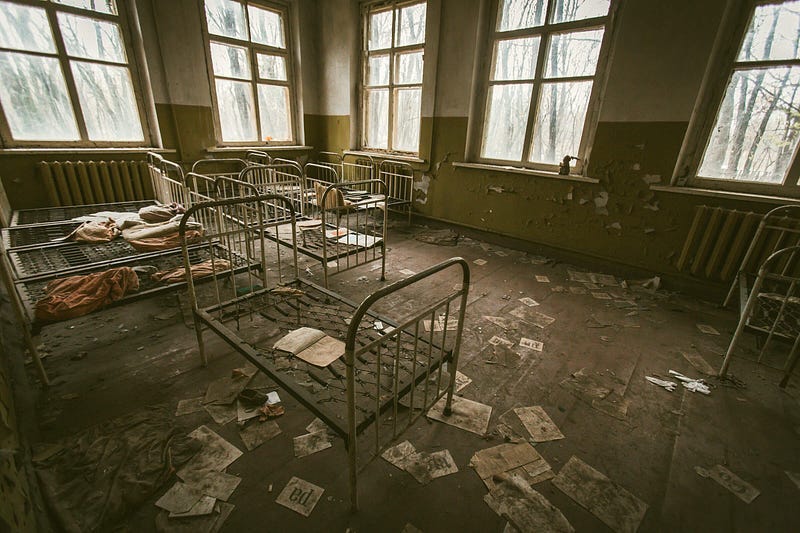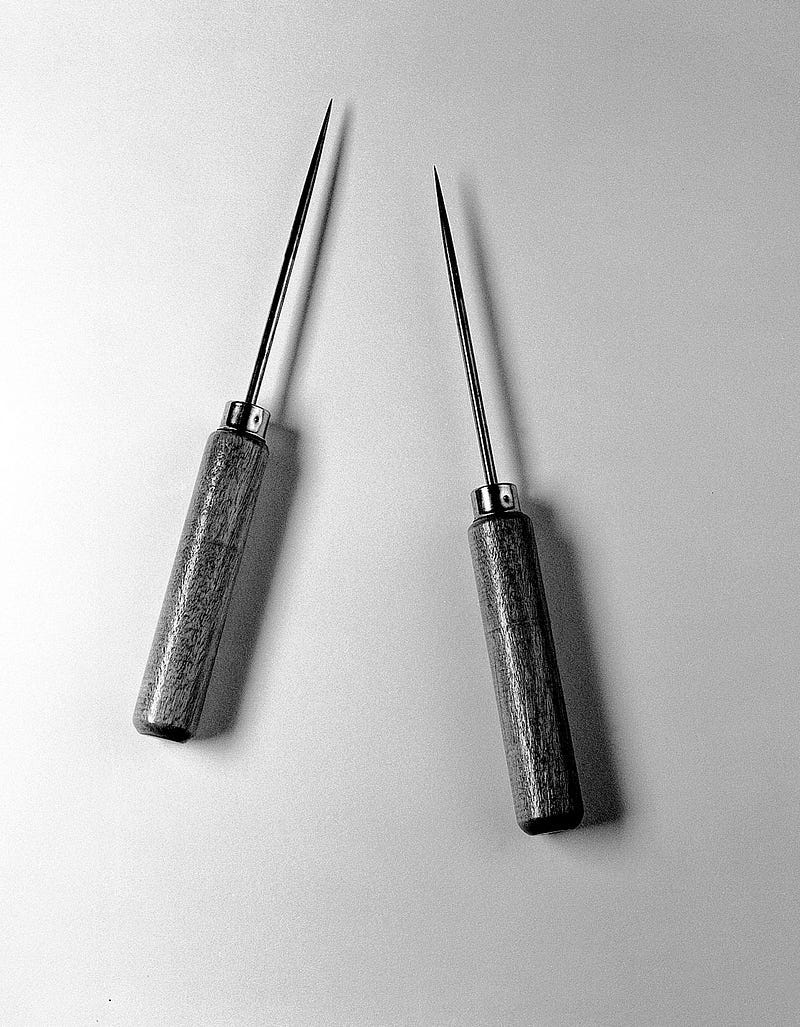Shock Therapies in One Flew Over the Cuckoo’s Nest
Whether through the ice-pick or the drill, Nurse Ratched uses lobotomy to subjugate patients to her will. Mental institutions really used…
Whether through the ice-pick or the drill, Nurse Ratched uses lobotomy to subjugate patients to her will. Mental institutions really used lobotomies for this purpose

Ken Kesey’s novel, One Flew Over The Cuckoo’s Nest (1962), and the film (1975) it inspired, symbolized a unique moment in American counter culture, characterized by extreme skepticism of authority and psychiatry. The possibility that nations may use different tools such as electroshock therapy and lobotomy, to exert control over people, was daunting. During the 60s and 70s many Americans were terrified of how these could be used locally and also by the Soviets. Both the film and Kesey’s novel staunchly criticize the use of psychosurgery and coercive psychological techniques in mental hospitals.
The novel/film stars Randle McMurphy, a charismatic psychopath, who is committed to a mental institution, the Oregon State Hospital. He challenged the draconian nurse who oversaw the ward. Nurse Ratched used electroshock and lobotomy to manage patients. McMurphy’s tumultuous passage through the mental institution allows Kesey to expose these techniques as abusive rather than therapeutic. It is key to remember that lobotomies were widely used until the introduction of thorazine in 1954. Kesey’s work criticizes past, ongoing, and possibly future medical practices.
Despite questioning the therapeutic value of electro-schock therapy and lobotomy both the novel and the film suggest that these techniques work because they can be effectively abused by authoritarian regimes to control others.
Shocking Discoveries
Hospitals were overcrowded and plagued with hopeless cases. These dire conditions meant that “risky, and often drastic interventions” were perceived as “acceptable by both physicians” and the public (Raz). Doctors noticed that some patients who suffered from mental conditions sometimes improved after going through some kind of shock (Harrington). Lobotomy was one of five kinds of shock therapy which included electroconvulsive therapy, malaria, insulin shock, and metrazol (Harrington). Shock treatments, especially lobotomy, are currently seen as barbaric but at the time were widely accepted. Between 1945 and 1955, the popularity of lobotomy peaked. About fifty thousand lobotomies were performed in that time (Pressman; Edson)
Lobotomies became the “single most important treatment in cases of severe mental illness” (Pressman). More than half of the patients who were lobotomized were chronic schizophrenics; nevertheless, lobotomies started to be used for other conditions such as pain, violence, and sexuality (Pressman). Some of the most challenging patients were also lobotomized because the operation was thought to “transform wild animals into gentle creatures” (Laurence,1937).
Mutilating Brains
In Cuckoo’s Nest, lobotomy symbolized the final defeat of the patient. Hinting that psychosurgery could be the end of society. In both the novel and the film, lobotomy is a way to control patients who are otherwise unmanageable. The characters describe the procedure as dehumanizing and emasculating. One patient compares lobotomy to “frontal-lobe castration”.
McMurphy continuously rebelled against Nurse Ratched and her authoritarian system. He often caused trouble. Ratched ordered for him to be lobotomized because she could not control him. After the operation, McMurphy is wheeled back into the ward; he is left as a shell of his former self.
The Chief, another patient, described the look of a lobotomized McMurphy as with “nothin in the face. Just like one of those store dummies’. Kesey’s works suggest that a lobotomized man is no man at all. A society where slight transgressions are punished with permanent mind alterations, like lobotomy, has lost its freedom.

A lobotomy is the surgical separation of the frontal lobe from the rest of the brain.
The movie and the novel depict two different methods of lobotomies. A thirteen year difference between them can explain some of these changes. Secondly, it is likely that the filmmakers wanted the post-operative visual to be the most impactful.
In the novel, McMurphy receives a transorbital lobotomy. This was a real procedure developed by Dr. Walter Freeman in 1946. This approach required the doctor to introduce an ice pick through the eye socket and maneuver it to sever the connection between the frontal lobe and the rest of the brain. This was the most popular and current method, therefore it is logical that Kesey used it for his book. Unlike its predecessor which required drilling into the skull, in an operating room; Freeman’s technique was simpler, quicker, and could be done in an office. In the book, one of the staff nurses describes how “a little black and blue around the eyes” can make “a new man”.
In contrast, the operation depicted in the film is performed with an “outdated” technique (prefrontal bilateral lobotomy). McMurphy has two holes drilled at the sides of his head, which are then stitched up. This highlights the irreversible destruction caused by the operation. The physical scarring in the patient’s head serves as a metaphor for his spiritual scarring.
Whether through the ice-pick or the drill, the objective for Nurse Ratched remains the same: To use lobotomy as a tool to subjugate a patient’s humanity to her control. The staff’s admiration for the effectiveness of lobotomy is explained by its ability to turn rebellious and aggressive patients into “sleepwalker[s] wandering round in a happy dream”.

It may disturb you to learn that…
Lobotomies were really used not only to treat patients, but also to change their behavior.
In 1947 an “unbalanced woman” who had been arrested fourteen times was allegedly transformed into a “rational, decent person” via a lobotomy (Lal).
In 1947, Millard Wright was released from prison after being lobotomized to eliminate his criminal tendencies. His story ends tragically.
In 1972 it became public that lobotomies were sometimes used in California to make it easier to deal with “troublesome” prisoners (Randal).
As lobotomies became popular, there was a growing awareness that patients could become “childish, dull, apathetic” (Laurence, 1950). This was seen as acceptable because it made patients manageable and in some cases allowed them to return to work. Freeman would continue to defend lobotomy because he argued that the operation’s success should be measured by the ability of patients to return to work (Pressman; Raz). It is important to note that this allowed hospitals to reduce overcrowdedness.
Even in its heyday, lobotomy had many detractors. In 1951, a Soviet psychiatrist denounced in a conference by the World Federation for Mental Health the devastating consequences of lobotomies: “violating the principles of humanity, making the patient an intellectual invalid”. Dr. Percival Bailey, an American neurosurgeon, was critical and “frankly appalled” by lobotomy (TET). He lamented that psychosurgery had “swept across the country leaving hecatombs of mutilated frontal lobes” (Harrison). Despite these misgivings, lobotomy was, during some time, widely respected and practiced.
One Flew Over the Cuckoo’s Nest was published shortly after the popularity of lobotomy dwindled.
Electroshock Therapy
In Cuckoo’s Nest, the abuse of EST is discussed frequently by the characters who are terrified of Nurse Ratched.Inmates are concerned about being sent to the “filthy brain-murdering room”. Kesey reveals how the purpose of the neurointerventions is not always, if ever, to improve the condition of the patient. Instead these are meant to make patients more manageable. On one occasion a patient is treated with EST, made docile, and released.
Harding, one of the main characters, is highly critical of EST. He said that EST provides “those fortunate souls [with] a free trip to the moon… [which] isn’t completely free. You pay for the service with brain cells instead of money.” He also describes how Nurse Ratched seems to be “one of the few to stand up for a grand old tradition (…) Brain Burning”; implying that this intervention no longer constitutes proper medical care.
In the book, EST is mostly depicted as a means to subdue and control patients. In contrast, the film suggests that EST may have therapeutic value, as in the real world, it was still prescribed as a medical intervention. This method is the only of the five shock treatments that is still used today. Nevertheless, its purpose and the manner in which it is administered has changed. Psychology Records discusses this in this interesting article.
Conclusions
Films and novels reflect aspects of the cultures that produce and consume them. Therefore, examining these artistic creations reveals much about the culture in which they were made. The ability to change behavior worried Americans. Kesey’s work is a manifestation of the concerns regarding the abuse of these technologies. Which made it plausible for states and individuals to abuse them. For example, Nurse Ratched ruled her psychiatric ward with an iron fist, controlling and subjugating patients through the use of these therapies. Her control is so insidious that most patients remain institutionalized willfully. Her ward was a microcosm for the whole world and it spoke to existing fears.
In 1979 there was a protest supporting a ban on psychosurgery. The protestors wore medical coats. They represented damaged brains by chopping cauliflowers on the street (P.D).
Authors: Lucas Heili and Christian Orlic contributed to this article.
Sources
Annas, G.J. & L.H. Glantz. 1974. Psychosurgery: the Law’s Response. Scholarly Commons at Boston University School of Law. https://scholarship.law.bu.edu/cgi/viewcontent.cgi?article=2205&context=faculty_scholarship
BB. 2021. Lobotomy: The Brain Op Described as Easier Than Curing a Toothache. Jan 30, 2021. https://www.bbc.com/news/stories-55854145 Accessed Marchg 21, 2023.
Edson, L. 1973b. “Growth of Shock Treatment Halted Lobotomies in US”. Springfield Union, 5 October, 1973, p.23.
Harrington, A. 2019. Mind Fixers: Psychiatry’s Troubled Search for the Biology of Mental Illness. W.W. Norton & Company. New York / London.
Harrison, E. 1956. “PSYCHIATRY AIDS HELD INADEQUATE; Neurologist Assails Freud’s Errors — Expects Chemist to Solve Schizophrenia Sees Errors in Freud”. The New York Times, 2 May. 1956, p. 16.
Kessey, K. 1962. One Flew Over the Cuckoos Nest.
Lal, G.B. 1947. “Reformed by Brain Surgery”. American Weekly, 9 March. 1947.
Laurence, W.L. 1937. “Surgery Used on the Soul-Sick Relief of Obsessions Is Reported” The New York Times, 7 Jun. 1937, p. 1.
Laurence, W.L. 1950. “PAIN RELIEF CITED IN BRAIN SURGERY The New York Times, 27 Oct. 1950, p. 37.
Orlic, C. 2023. Mad Doctors, Ice Picks, & Lobotomized Children: The Lessons Behind Dully’s Tragedy. Medium Feb 23, 2023. https://medium.com/@curingcrime/mad-doctors-ice-picks-lobotomized-children-the-lessons-behind-dullys-tragedy-684b0f356d17 Accessed March 22, 2023.
PD. 1979. “Lobotomy Foes Rally: Demonstrators in Medical Garb Back Rep. Stokes’ psychosurgery war”. Plain Dealer (Cleveland, OH), 16 October, 1979, p.12.
Pressman, J. D. 1986. Uncertain Promise: Psychosurgery and the Development of Psychiatry in America 1935 to 1955. University of Pennsylvania. Dissertation.
Psychology records. 2022. I Helped to Deliver ECT — Should We Give Electric Shock Therapy Another Chance?. Medium Oct 1, 2022. https://medium.com/@psychologyrecords/i-helped-to-deliver-ect-should-we-give-electric-shock-therapy-another-chance-ecf2db19b31d Accessed March 23, 2023.
Randal, J. 1972. “Psychosurgery Trend Alarming”. The Evening Star (Washington DC), 2 March 1972, p.14.
Raz, M. 2013. The Lobotomy Letters: The Making of American Psychosurgery. University of Rochester Press.
TET. 1956. “Brain Specialist Decries Psychiatric Treatments”. Trenton Evening News, 1 May 1956, p.4.
Originally published on Medium




